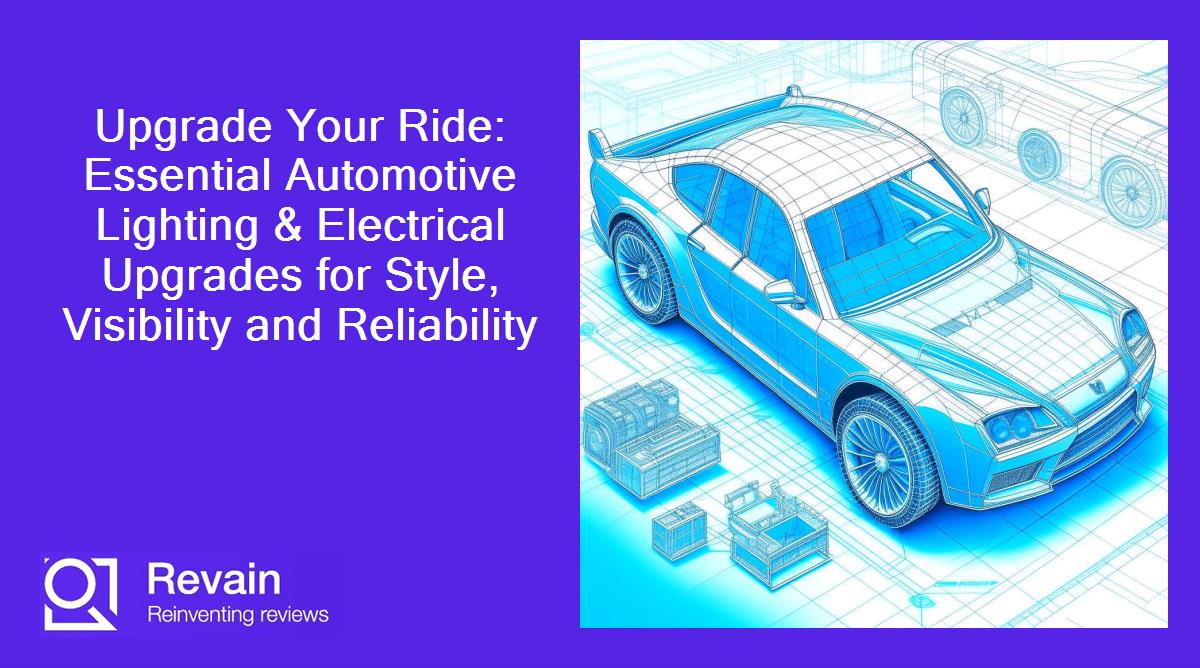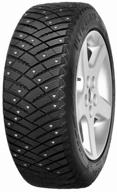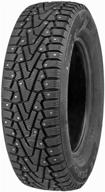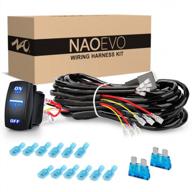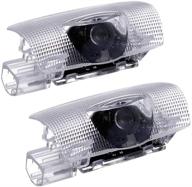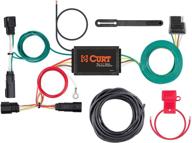Common Automotive Electrical Issues and Solutions
Automotive electrical systems can develop issues over time due to wear and tear or damage. Identifying and resolving these problems quickly is important to keep your vehicle running safely and efficiently. Here are some of the most common electrical issues in cars and potential solutions.
Similar products
Battery and Charging System Problems
Issues with the battery and charging system are among the most frequent electrical problems in vehicles. Some common issues include:
- Dead battery - Failing to start due to a discharged or damaged battery. Solution is to recharge, replenish fluids, or replace the battery.
- Alternator not charging - The alternator fails to charge the battery while driving. Needs replacement of the alternator.
- Corroded battery terminals - Corrosion prevents proper electrical contact. Clean terminals and cables.
Short Circuits and Blown Fuses
Short circuits and blown fuses interrupt the flow of power in a circuit. Potential causes include:
- Frayed wiring - Exposed wire cores can connect and cause shorts. Repair or replace damaged wires.
- Electrical overload - Too many devices on one circuit will blow a fuse. Check each circuit and balance electrical load.
- Component failure - A failed switch, relay or module can cause a short. Test components and replace failed parts.
Flickering or Dim Lights
Flickering or dim lighting is often caused by:
- Bad connections - Loose or corroded wires and contacts can intermittently disrupt lights. Check connections and clean/tighten as needed.
- Dying bulb - Old bulbs produce less light. Replace old bulbs.
- Damaged wiring - Fraying or pinched wires may have degraded connections. Repair or replace damaged wiring.
Solutions
Electrical issues can seem daunting, but the following tips can help resolve problems:
- Get diagnostic testing - Use a voltmeter or have a mechanic inspect electrical system components.
- Check error codes - Diagnostic trouble codes from the vehicle computer can help pinpoint issues.
- Inspect connections - Wiggle wiring harnesses while running to check for shorts. Clean corroded connections.
- Replace damaged parts - Swap out burnt out bulbs, corroded terminals, frays wires, etc.
- Consider preventive maintenance - Replace older components before they fail.
Paying attention to your vehicle's electrical system and addressing issues promptly can help avoid more serious problems down the road. If the issue is complex, always contact a qualified automotive electrician for assistance.
Latest Automotive Lighting Technology and Trends
Advanced lighting technologies are transforming modern automobiles. Here are some of the latest innovations in automotive lighting along with emerging trends.
LED Lighting
LEDs or light emitting diodes are becoming standard in automotive lighting applications. Benefits of LED lights include:
- Energy efficiency - LEDs consume far less electricity than incandescent or halogen bulbs.
- Long lifespan - LEDs can last up to 50,000 hours compared to 1,000 hours for halogen bulbs.
- Durability - Solid state LEDs are more resistant to vibrations and impacts.
- Brightness - LEDs provide increased luminance and light dispersion.
| Lighting Function | LED Advantages |
|---|---|
| Headlights | Whiter light, improved visibility at night |
| Brake and tail lights | Faster illumination for safety |
| Interior lighting | Softer, more customizable ambiance |
Top products in 🔌 Automotive Lighting & Electrical
Adaptive Front Lighting Systems
Adaptive systems automatically adjust headlight beam patterns for better visibility. This is achieved using:
- Swiveling lights - Headlights rotate according to steering input to better illuminate curves.
- Beam pattern control - Light intensity and direction are adjusted based on vehicle speed, weather, road conditions.
Pixel LED Headlights
Ultra-high definition Pixel LED lights use thousands of individual LEDs to enable features like:
- Projecting symbols, warnings, or animations onto the road.
- Adapting light distribution for optimal visibility of pedestrians and vehicles.
- Highlighting road signs and markings for driver awareness.
Laser Lighting
Lasers amplify and focus LED or xenon headlight beams for increased intensity and longer range illumination. Benefits include:
- Lightweight, compact design compared to large lens or reflector headlights.
- Extreme brightness and precision beams enhancing visibility and reducing eye fatigue.
- Enables automated hazard detection and driver warnings.
OLED Technology
OLED or organic LEDs provide thin, flexible, and efficient lighting. Automotive applications include:
- Slim taillights and headlights with unique shapes and styles.
- Backlit emblems and displays with uniform light.
- Curved or rollable interior cabin lighting.
Emerging Trends
- Greater light brightness, control, and adaptive capabilities through LED advancements.
- Legalization of adaptive driving and laser beams in more regions.
- OLED flexibility enabling innovative lamp designs and concepts.
- More cost effective manufacturing through standardized platforms.
- Lighting integrated with vehicle sensors and cameras for autonomous functionality.
In summary, automotive lighting is evolving rapidly to improve visibility, customization, and autonomous vehicle capabilities through LEDs, lasers, adaptive systems and more.
Another interesting products
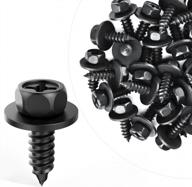

35 Review
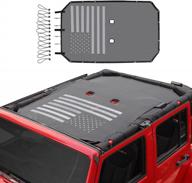

31 Review
Top Automotive Bulbs and Headlights for Improved Visibility
Upgrading your headlights with modern high-performance bulbs can significantly improve nighttime and low light visibility. Here are some top options:
LED Headlight Bulbs
LED headlight bulbs offer brighter, whiter light in a compact durable package. Benefits include:
- 50,000+ hour lifespan
- Faster light output
- Crisp, clear beams
- Cool operation
Top models from reputable brands include:
- Philips X-tremeVision Pro LED
- SYLVANIA ZEVO LED
- PIAA Xtreme White Plus LED
HID & Xenon Headlights
HID or xenon bulbs produce a brighter, bluer light than halogen. Pros include:
- 2-3X more light output
- Whiter color temperature
- Great for high beam performance
Leading options include:
- Osram Xenarc Cool Blue Intense HID
- Philips DiamondVision HID
- SYLVANIA SilverStar zXe HID
Halogen Headlight Bulbs
While newer LED and HID lights are taking over, halogen bulbs remain a reliable and affordable option. Look for bulbs that offer:
- Increased wattage for brighter beams
- Blue coating for whiter light
- Crisp filament and pressurized gas fill for optimal light performance
Quality halogen choices include:
- Philips CrystalVision Ultra
- SYLVANIA SilverStar Ultra
- PIAA Xtreme White Halogen
Headlight Assemblies
For optimal light performance, also consider replacing old halogen headlight assemblies. Upgrade options include:
- Projector beams for focused light distribution
- LED or HID replacement assemblies
- OEM fit or custom aftermarket designs
Consult your owner's manual for correct replacement assemblies for your vehicle.
With the right bulbs and headlights, you can illuminate the road and stay safe on nighttime drives.
Automotive Wiring Repair Tips and Tricks
Electrical wiring problems can cause all sorts of issues in your vehicle. Here are some tips for diagnosing and repairing common automotive wiring issues.
Troubleshooting Tips
- Check for loose connections - Junctions can vibrate loose over time. Reseat connectors and clean terminals.
- Look for damaged wires - Inspect for cracked insulation, fraying, pinching, or corrosion.
- Wiggle wires while running - Move harnesses to replicate intermittent faults.
- Check voltage at components - Use a multimeter to test power and ground circuits.
- Consult wiring diagrams - Identify wire routing and connections for the circuit.
How to Repair Damaged Wiring
When you locate a damaged wire, here are repair tips:
- Cut out the damaged section - Remove any corroded or frayed wire.
- Strip back insulation - Use wire strippers to access fresh wire.
- Splice in new wire - Solder and seal splice with heat shrink tubing or electrical tape.
- Protect repair - Wrap tape or loom around repair to prevent vibration damage.
Replacing Broken Wiring Harnesses
For harnesses damaged beyond repair:
- Source harness replacement - Consult wiring diagrams to get the right harness.
- Remove old harness - Label connectors and cut away harness clips.
- Install replacement - Follow harness routing diagrams. Support with clips.
- Reconnect terminals - Ensure connectors are fully seated and locked.
Tips for Routing New Wiring
- Use grommets when passing through metal - Prevent rubbing and electrical shorts.
- Avoid moving components - Route away from hinges, pedals, steering shafts, etc.
- Support wires with clips - Don't allow dangling wires to vibrate and fray.
- Provide slack near moving parts - Coils of slack wire prevent tearing.
- Separate from heat sources - Route wiring away from hot exhaust components.
With some diligent troubleshooting and safe repair practices, you can get your vehicle's electrical issues fixed and keep everything working properly.
Must-Have Automotive Fuses and Relays for Electrical System Protection
Fuses and relays are critical to protecting your vehicle's electrical system from damage. Having a selection of common replacement fuses and relays can help you quickly fix electrical faults and get back on the road. Here are some must-have fuses and relays to keep in your car:
Blade Fuses
Blade fuses are flat fuses with exposed metal blades on the ends. They are the most common type found in modern vehicles. Useful amperages to have include:
- 5A, 10A, 15A, 20A - For lower current lighting and accessory circuits.
- 25A, 30A - For higher load circuits like power windows or seats.
- 40A and up - For safety systems like ABS, airbags, and charging.
ATO / Mini Fuses
ATO or mini fuses are smaller than blade fuses and used in higher amperage applications. Keep an assortment of:
- 20A, 25A, 30A
- 40A, 50A, 60A
Micro2 Fuses
Micro2 fuses are very compact and used for lower current circuits in modern vehicles. Have:
- 1A, 2A, 3A, 4A, 5A
- 7.5A, 10A, 15A
Relays
Relays redirect power from a switch to a device in a circuit. Keep common types like:
- 12V 40A power relay
- 12V 30A accessory relay
- 12V 20A signal relay
For older vehicles, also have cartridge and bosch style relays and fuses on hand. Investing in a variety of fuses and relays matching your vehicle's electrical system allows you to quickly troubleshoot and repair electrical faults.
Upgrading Vehicle Lighting for Style and Safety
Upgrading your stock lighting is a great way to customize your vehicle's look while improving visibility and safety. Here are some lighting upgrades to consider:
LED Headlights
LED headlights offer bright, white illumination for better nighttime visibility. Upgrading provides:
- Brighter, farther reaching beams
- Attractive modern appearance
- Long 50,000 hour lifespan
Choose a quality LED conversion kit or replacement headlight assembly for your make and model.
Projector Headlights
Projector headlights focus and direct light optimally using a projection lens. Benefits include:
- Increased visibility of road hazards, signs, and lanes
- Reduced glare for oncoming drivers
- Custom styling options
Projectors can integrate LEDs or HIDs for maximum performance.
Underbody Lighting
Underbody lighting adds a colorful glow for a stylish look. Options include:
- LED light strips along rocker panels
- LED wheel well lighting
- Color changing and dimmable effects
Choose weatherproof IP67 rated LED strips and a suitable controller.
Interior Lighting
Interior lighting upgrades create a stylish, modern atmosphere:
- LED footwell lighting
- Color changing cabin ambient lighting
- Backlit door sills
Customize your ride with controller apps and sound reactive options.
Safely and easily upgrade your vehicle's stock lighting with LED, projector, and other lighting options to improve visibility and create custom looks.
Choosing the Right Automotive Batteries for Reliability and Performance
Selecting the right replacement battery is crucial for keeping your vehicle running properly. Here are some tips for choosing quality automotive batteries for optimal reliability and performance:
Check the Specs
Ensure any new battery matches your vehicle's specifications including:
- Voltage - Typically 12V, but some systems run higher voltages.
- Cold cranking amps (CCA) - Measure of starting power needed for your vehicle.
- Reserve capacity - How long battery can run accessories with engine off.
- Physical size - Dimensions must match battery tray space.
Consider Your Climate
In extreme cold, look for batteries with higher CCA ratings and cold weather performance. Hot climates demand batteries designed to resist overheating.
Maintenance Type
Low maintenance batteries have calcium alloy plates that reduce corrosion. No need to check electrolyte levels. Maintenance free batteries are sealed units you can install and forget.
Warranty Coverage
Look for lengthy free replacement periods on new batteries, like 3 years or more. Longer warranties indicate better expected reliability and lifespan.
Trusted Brands
Stick to reputable battery brands known for quality like:
- ACDelco
- Bosch
- Optima
- Interstate
Avoid cheap no-name batteries that may fail prematurely.
New Versus Refurbished
When possible, choose a brand new battery over a refurbished one for maximum life. But tested, warranted refurbished units can provide good value.
Choosing the right battery means considering specifications, climate, maintenance, warranty, and brand reputation. Invest in a quality battery suited for your vehicle for reliable performance.
Benefits of Amazon Prime for Automotive Lighting & Electrical Purchases
An Amazon Prime membership provides significant benefits when buying automotive lighting and electrical products online. Here are some of the top perks:
Free Two-Day Shipping
Prime members enjoy free two-day shipping on millions of eligible items. This means you can get your automotive lighting bulbs, fuses, wiring harnesses and other electrical supplies delivered quickly without paying extra shipping fees.
Scheduled Delivery Options
Prime members can choose a specific delivery date during checkout, which is useful for timing a lighting or electrical repair project. You can also have packages delivered to an Amazon locker for pickup at your convenience.
Instant Order Refunds
Amazon offers instant order refunds on eligible purchases for Prime members. So if you get the wrong part or are unsatisfied with an item, you can get an immediate refund credited to your account.
Returns Are Free and Easy
Prime includes free return shipping, so sending something back is free. Print a label from your account and drop it off - no hassles. This takes the risk out of buying electrical components online.
Access to Prime Early Deals
As a Prime member you get 30 minute early access to Lightning Deals on Amazon. That means you can snap up an unbeatable deal on that LED headlight kit before anyone else.
A Prime membership pays for itself quickly when you order automotive parts online regularly. Sign up today to start enjoying these benefits and convenience.
What Are The Most Common Automotive Lighting And Electrical Problems?
Based on the search results, here are some of the most common automotive lighting and electrical problems:
- Dead battery
- Malfunctioning alternator
- Faulty starter motor
- Bad fuse box
- Bad spark plugs
- Malfunctioning ignition coils
- Loose or failed spark plugs
- Fatigued solenoid or starter
- Bad battery cables
- Electrical fuses that are blown
- Loose wires
- Problems with your ignition switch
- Water and moisture intrusion
- Corrosion, shorts, and other electrical problems caused by moisture
- Dimming or flickering lights
- Malfunctioning accessories
- Frequent battery issues
- Strange smells or smoke
- Blown fuses
- Defective alternator diodes
- Rodent infestation
It's important to address these issues quickly to ensure that your car is safe and reliable. Electrical problems can be costly to fix, depending on what's wrong, the type of car, and where you live. If you notice any of these symptoms, it's best to take your car to a professional mechanic who can diagnose and fix the problem.
How To Troubleshoot A Dead Battery In A Car?
If you're having trouble starting your car, it could be due to a dead battery. Here are some steps you can take to troubleshoot the problem:
- Check for user error: Make sure you haven't left any lights or accessories on that could have drained the battery. If you have, try jump-starting the car and letting it run for a while to recharge the battery.
- Check the battery age: If your battery is old, it may be time to replace it. Lead-acid batteries can develop sulfate crystals on the negative plates over time, which can reduce the battery's ability to deliver power to your vehicle and prevent your car from starting.
- Check the charging system: If the battery warning icon comes on while you're driving, this is likely a sign that there's a malfunction within your charging system. Have a mechanic check to see if your alternator, serpentine belt, battery cable and terminals, and alternator belt are all functioning correctly.
- Check for corrosion on battery terminals: Corrosion on your battery terminals can prevent your car from starting. Clean off any corrosion with a wire brush or other cleaning tool.
- Check the battery charge: Use a voltmeter or battery charger to check the battery charge. If the battery is not holding a charge, it may need to be replaced.
- Test the alternator: If the battery is not the problem, it could be





